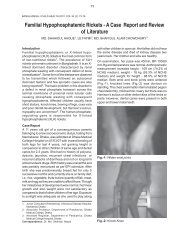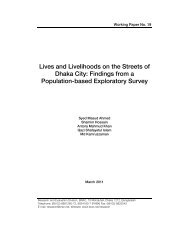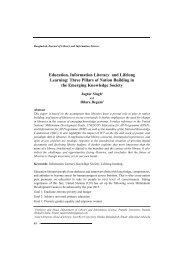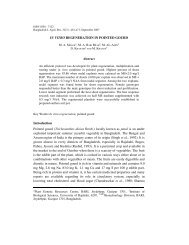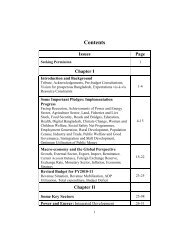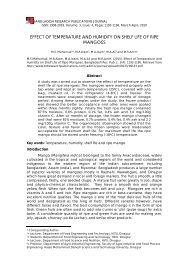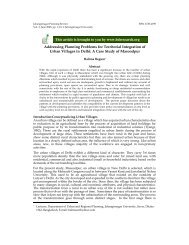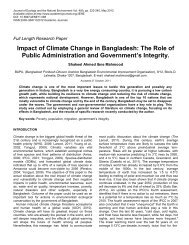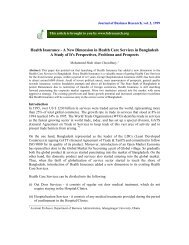Economic Value Added _Formated_.pdf
Economic Value Added _Formated_.pdf
Economic Value Added _Formated_.pdf
Create successful ePaper yourself
Turn your PDF publications into a flip-book with our unique Google optimized e-Paper software.
Jahur & Riyadh:<strong>Economic</strong> <strong>Value</strong> <strong>Added</strong> as a Management Tool 57<br />
ROA, Net Profit, Profit Per employee, and Deposit Per Employee. On<br />
the other hand, the rank correlation coefficients between “EVA and<br />
Interest Income” and “EVA and Spread” have been found insignificant.<br />
In these cases, the null hypothesis “There is no significant correlation<br />
between ‘EVA and Interest Income’ and ‘EVA and Spread’ has been<br />
accepted.<br />
EVA has been found to have a moderate degree of correlation with<br />
ROA, Net Profit, Profit Per Employee and Deposit Per Employee. These<br />
relationships are reasonably expected. Higher ROA, Net Profit, Profit Per<br />
Employee and Deposit Per Employee are expected to produce higher<br />
EVA. It is also not surprising that Bank which has higher ROA, Net<br />
Profit, Deposit Per Employee and Profit Per Employee have a negative<br />
EVA. It is therefore, imperative that Banks underscore the importance of<br />
measuring EVA separately.<br />
13. Conclusion<br />
The above analysis had led researchers to conclude that EVA is an<br />
important measure to judge a bank’s performance in view of the current<br />
scenario of Banks having to satisfy a large number of shareholders.<br />
It has been found in the study that EVA does have a moderate<br />
degree of correlation with ROA, Spread, Net Profit, and Profit Per<br />
Employee. It has also been found in some of the cases that the ranking<br />
under EVA is high but not so high under the criterion of ROA. This is<br />
explained by the fact that banks essentially work on the principle of<br />
Asset-Liability Management and the funds employed in the business will<br />
therefore be considerable more than the Net Worth. When return is<br />
computed as a percentage of net worth the rank is pretty low, whereas in<br />
terms of EVA, which just takes the return as a percentage of Net Worth<br />
the banks are doing pretty well. In fact, the later is the better strategy<br />
from the viewpoint of Shareholders.<br />
It can therefore be concluded in view of the current scenario and<br />
intense competition anticipated in the coming years that Banks will<br />
replace other performance measures with EVA and eventually, will get<br />
to be judged by the extent of value generated for shareholders over and<br />
above the weighted average cost of capital.



